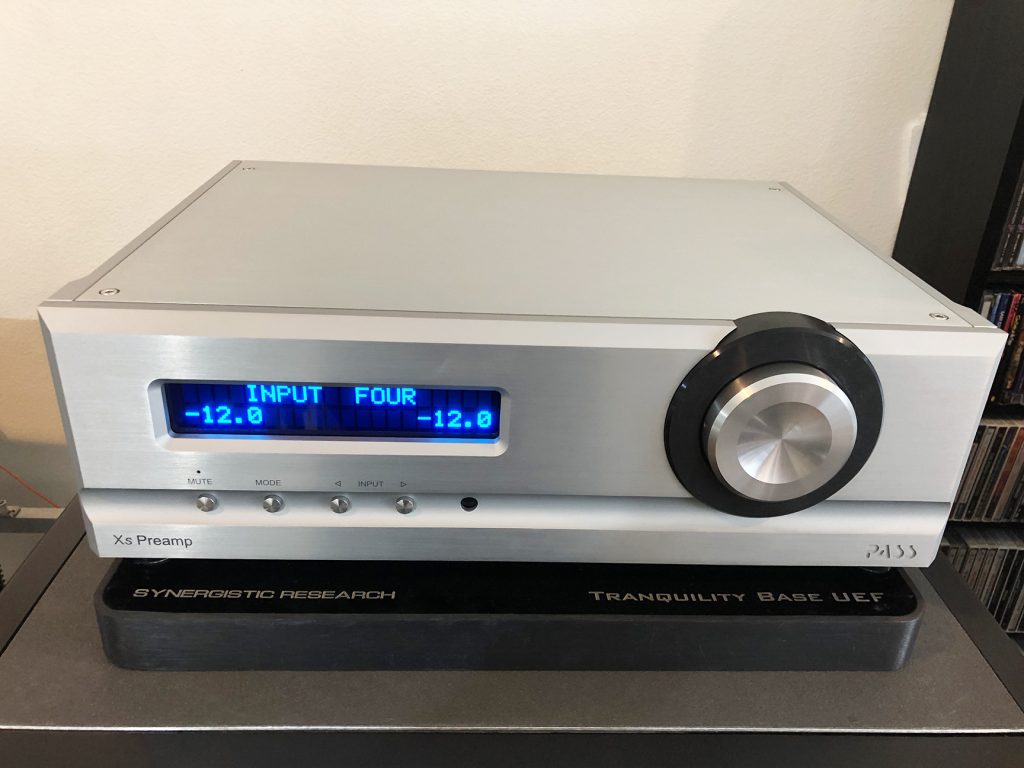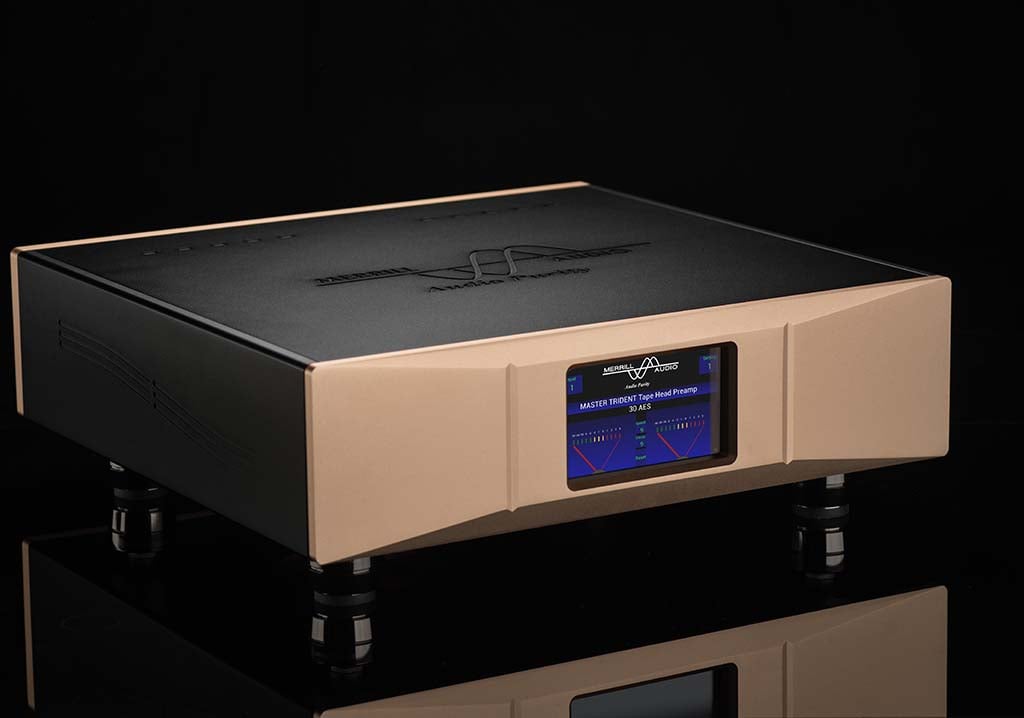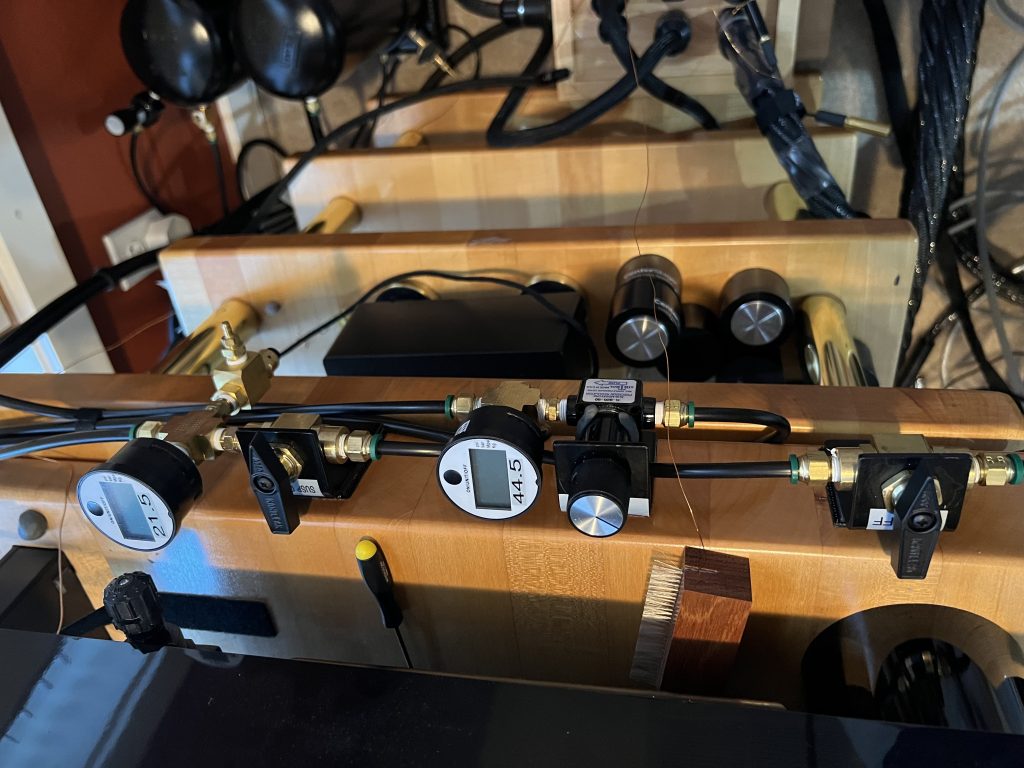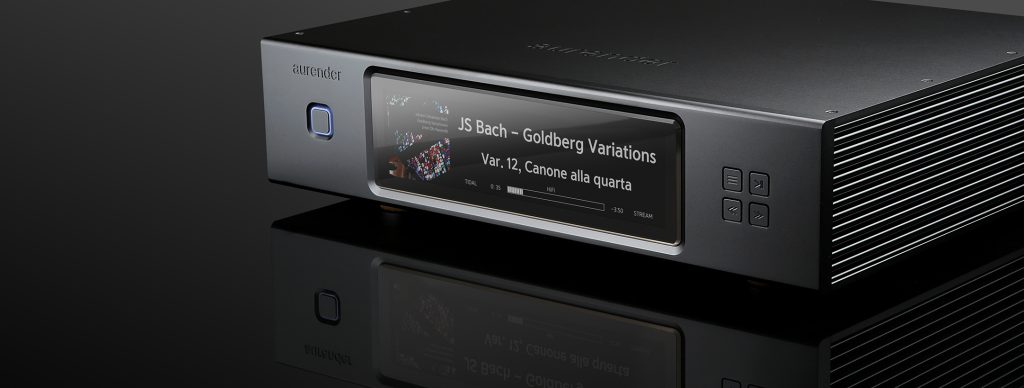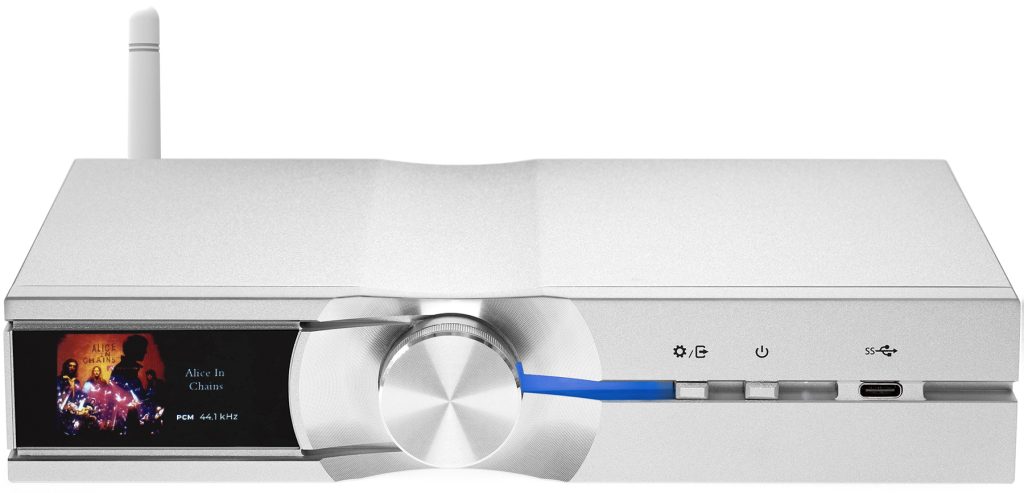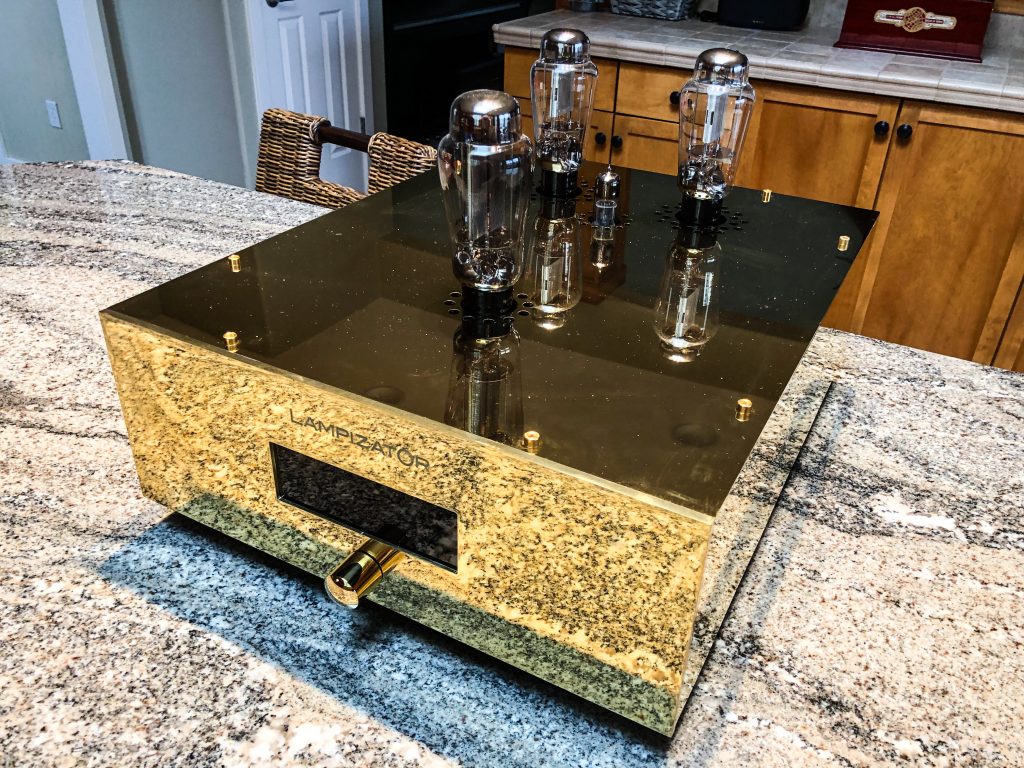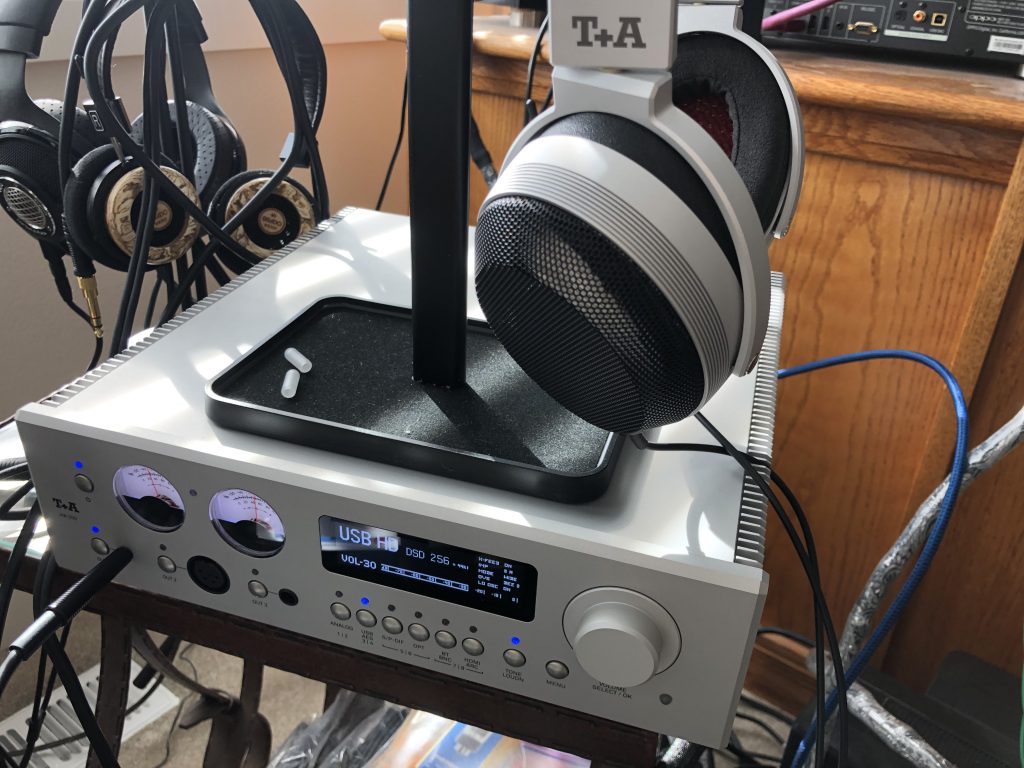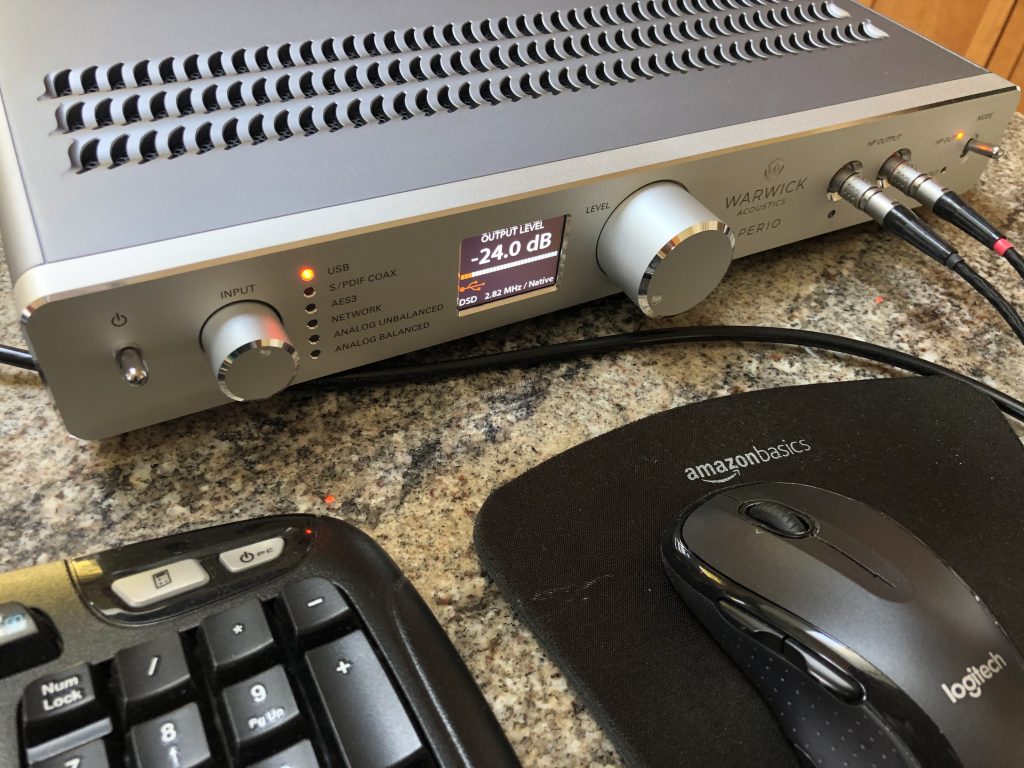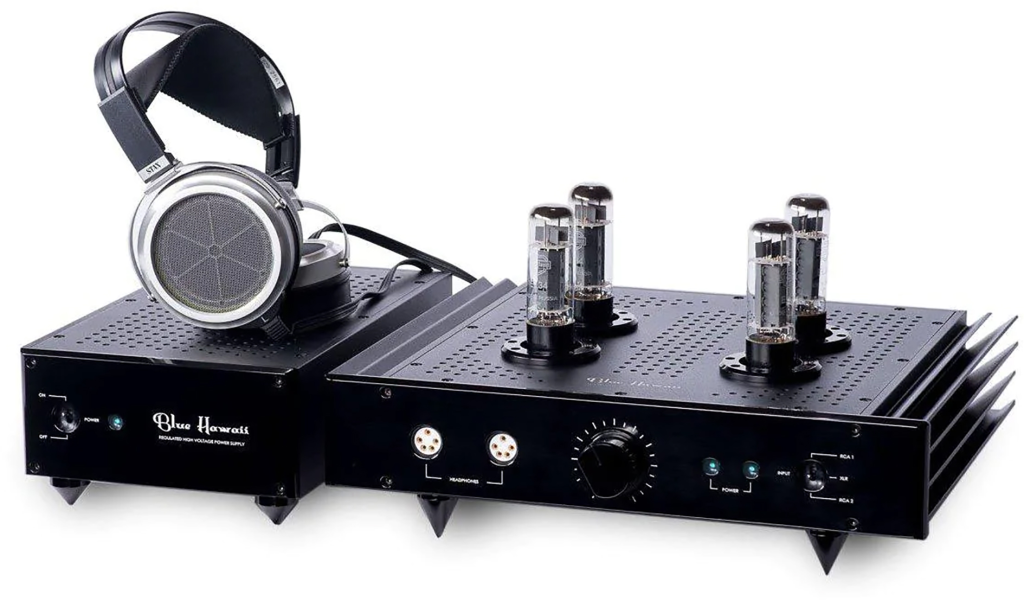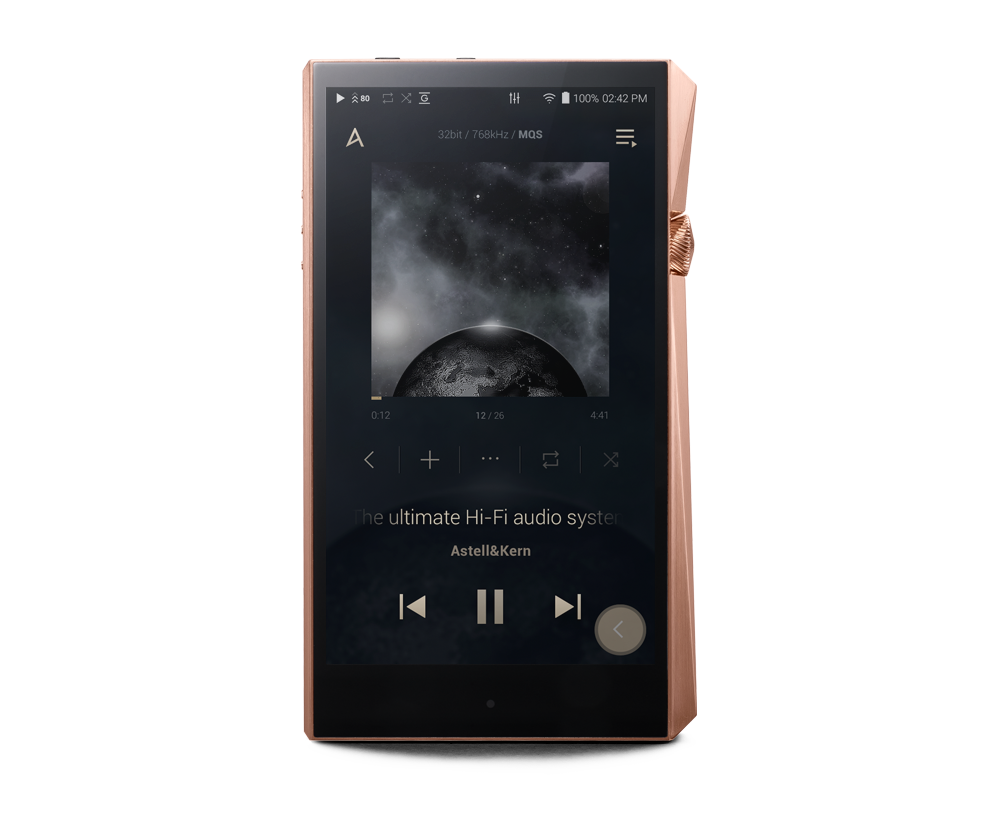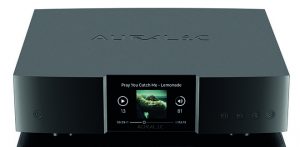Opus3 Records
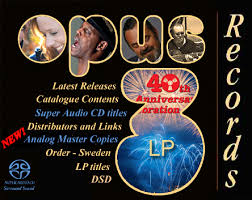
Jan-Eric Persson, Head Honcho at Opus3 Records, has been a good audio friend of mine for years now. An early adopter of SACD and DSD, Jan-Eric has transferred many of his early tapes to DSD, and has been recording in DSD for quite a while. He is still producing SACDs, and has quite a stock of them HERE.
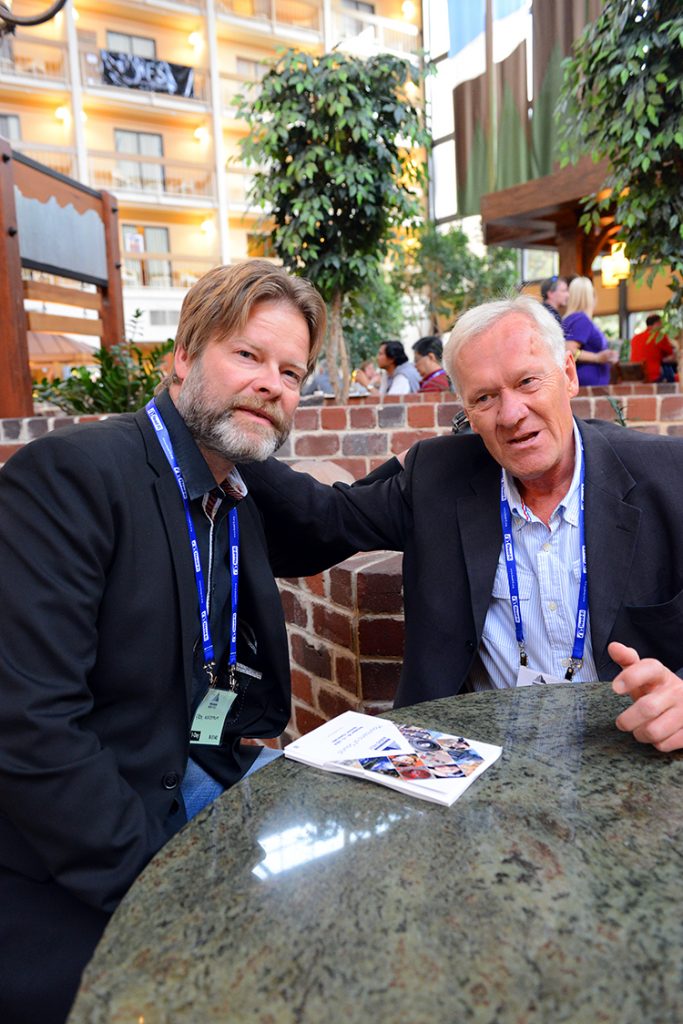
Eric Nordstrom (left) and Jan-Eric Persson of Opus3 Records at RMAF 2014
In fact, Jan-Eric established his own separate DSD download site, DSDfile.com, which allows DSD lovers to go directly to a point-of-sale site to get their Opus3 albums from the inventory there. DSD64 and DSD128 albums are available, and at very reasonable prices.
Year after year Jan-Eric continues to please with the superior quality of his audio engineering. It's time to recognize his work once again in 2019!
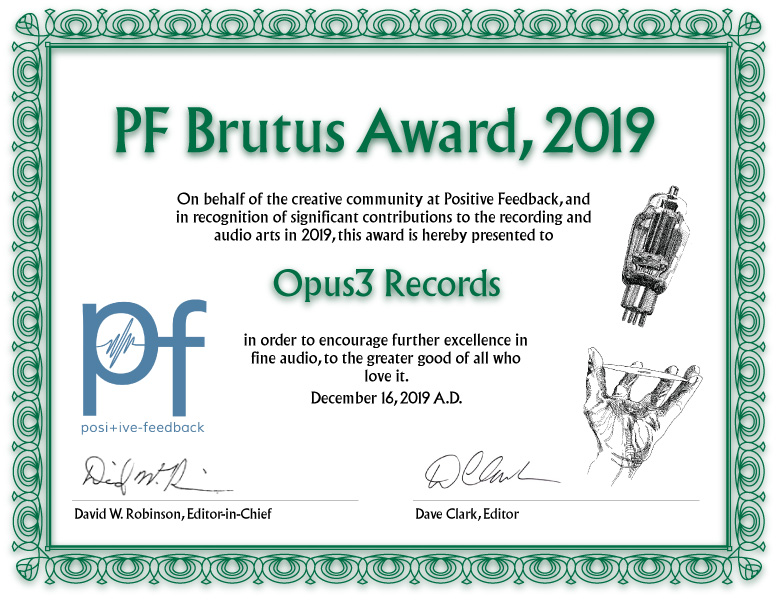
JRiver Media Center 25 (and now 26, arriving here just after the cutoff)

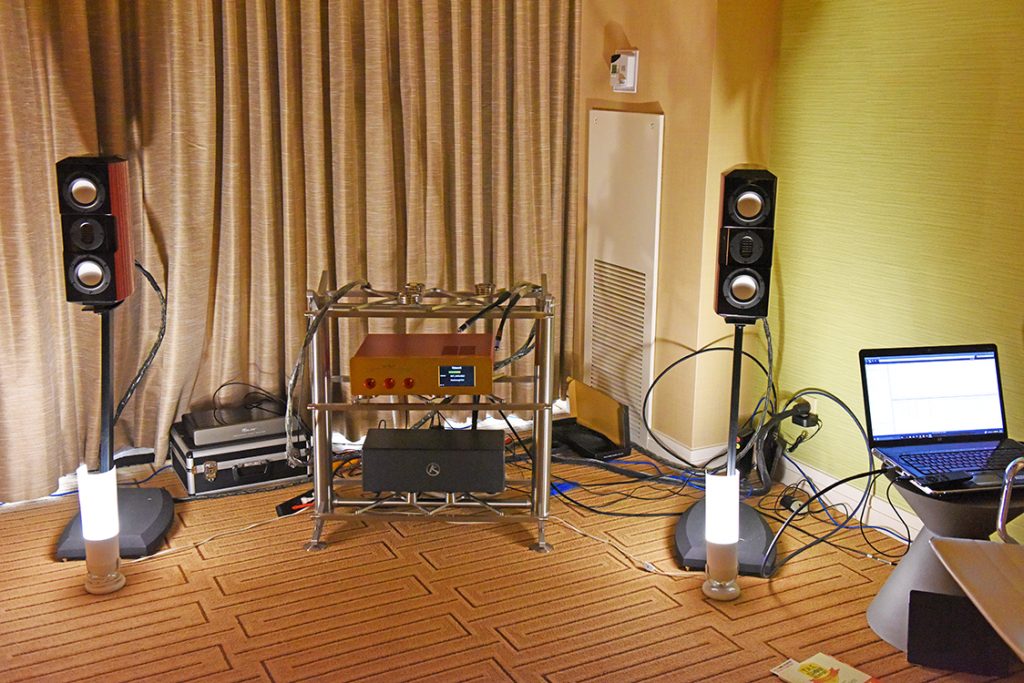
JRiver's Media Center in action (on the HP computer to right) during setup in Positive Feedback's Hospitality Room at THE Show Newport Beach 2016
JRiver's Media Center, Windows version, has been in heavy use here at PF for many years now. For example, I used it every year in the PF Hospitality Room at THE Show Newport Beach and the LA Audio Show. Media Center 25 was the latest iteration in this powerful A/V playback package, and did what I've always expected it to do: after a simple configuration for the particular DAC that we were using (and I've used dozens), just play the music reliably, and with outstanding sound.
Yeah, it does that just fine.
After the cutoff for Brutus Awards in 2019, JRiver released a new major revision of Media Center, version 26. Having used it for a few weeks now, I can say that it has continued the tradition of playing back whatever file format that I've tossed at it. A true audiophile reviewer's tool, for sure!
But Media Center does far more than that, as a visit to their home page demonstrates. Audio, yes, but also video, multimedia, network file integration, home theater, photographic images…a significant and powerful software system for an all-in-one solution. Frankly, I only use a fraction of the capabilities, since I'm mostly interested in its audio capabilities…but it delivers those with aplomb.
And I should mention that Media Center's system for applying updates to its software automatically upon accessing the program is really handy. No having to chase down updates manually…Media Center does that for you. At a price that remains quite reasonable for all of the constantly-improving capabilities that JRiver adds to it.
By the way, the JRemote system for smartphones and iPads really makes the Media Center system easy to use for listening and demonstrations, too...we have used it many times both here and in our hospitality rooms, as I've mentioned.
So, JRiver's Media Center wins another one of my Brutus Awards for 2019!
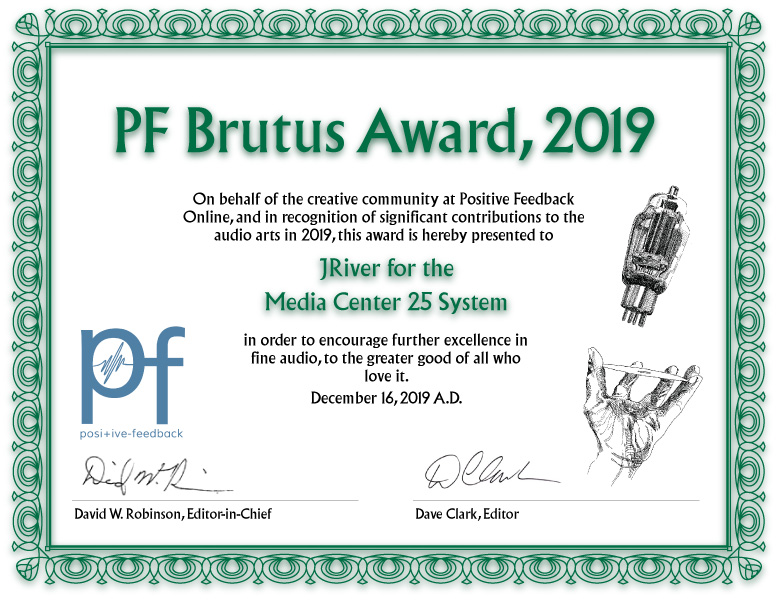
Roon 1.7

Speaking of powerhouses, let's recognize Roon. Now at version 1.7, Roon represents a master interface and music database system par excellence. Roon has established itself as a de facto standard for a master media control interface in the world of streaming audio, featuring tight integration with both Qobuz Studio and TIDAL Master.
In fact, I'm sitting here right now, listening to Bombay Bicycle Club's latest album, Everything Else Has Gone Wrong on TIDAL Master with MQA. (A mere 44.1kHz/24-bit, alas!) Our exaSound DM reference streamer/DAC is…like so many other streaming DACs these days…a fully Roon-equipped design. With our new Generation 7 iPad running Roon 1.7 as the command interface for the DM, I have a supreme handle on my streaming music.
Roon has become my default go-to music research and database lookup tool for all of my work here at Positive Feedback. With the Internet-connected world that we live in, awash in tens of millions of songs, decades of music, and countless artists both past and present, it is quite possible to drown in all of the recordings that are currently accessible.
You see, the problem is not in putting things online. We are doing that by the megaton.
The real problem is in finding what you want or need.
Search is king. Get it?
And Roon 1.7 has made it possible for me to do first-class research.
I'm a big believer in research.
I should also say that both of our Roon 1.7 systems here…both with exaSound Roon-equipped DACs and streamers…sound brilliant. Wonderful sound, and great music of all kinds!
So, my hat is way off, saluting the good folks at Roon. Keep up the killer work!
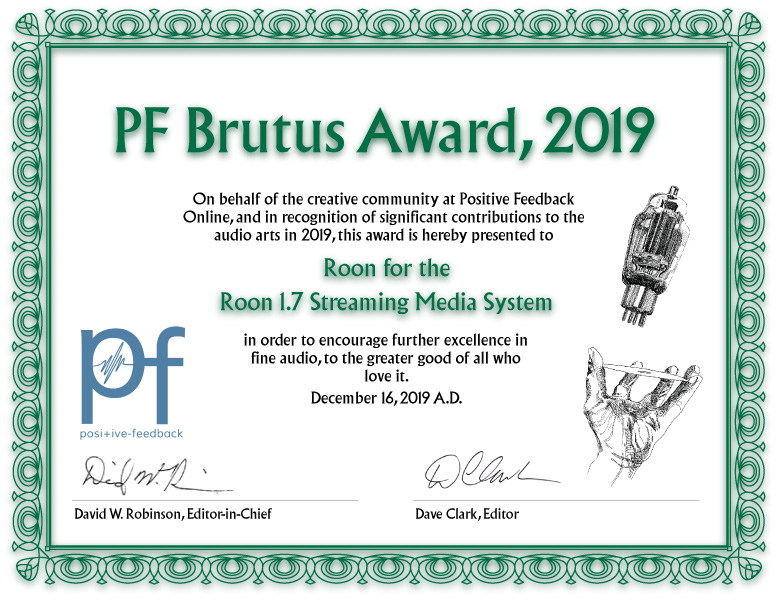
Qobuz Studio Premier

A relative newcomer to the streaming scene here in the USA…having originated in Europe…Qobuz has been knocking ‘em out of the park over the past year stateside. With their new “Studio Premier” package, Qobuz has developed an aggressively-priced system for true high-resolution .FLAC downloads. Some go all the way to 192kHz/24-bit of PCM resolution. And since Qobuz eschews MQA (unless that's absolutely the only format offered by a label…not likely), there are no additional folding/unfolding steps or hardware compatibility involved.
I have been listening to Qobuz for the past year, and followed its USA beta launch in very early 2019. The switchover from the European package that I was running to the new US beta, and then the full monty, went smoothly enough. All has been jake since then.
Since then, I've used Roon 1.6 and then 1.7 (see above) as my master interface to handle Qobuz in our reference office system (exaSound DM) and in our outdoor system (exaSound Playpoint + e32 DAC Mk II with MQA). In the car, I use the Qobuz app on my iPhone X via USB link to our new 2020 Cadillac XT5 Sport's sound system.
In our reference stereo listening room, the brilliant Aurender A30 all-in-one does not use Roon; instead, Aurender has their own dedicated music server app, Conductor. This is easily run as an app on a smartphone or iPad. I'm using our new Seventh Generation iPad, where it runs like lightning. Conductor does a very fine job of supporting Qobuz (and TIDAL MQA). Once you learn the Conductor interface, which is pretty easy to pick up, then you're easily able to select Qobuz at the touch of a button.
Playback Designs' MPT-8 Transport also supports Qobuz (and TIDAL, without MQA, among others), if you add the StreamX option. Playback Designs is also Roon-ready with the Roon option, but also has a dedicated app for the iPad as its overall command interface if you like/prefer. It's called Playback Designs (you'll find it at the Apple iPad Store), which allows you to access Qobuz that way.
The sonic performance with Qobuz in each of the above settings, allowing for significant differences in downstream playback systems…and for the fact that we're talking about PCM here…was exemplary. Certainly, PCM benefits by going to higher rates, though it always remains PCM, of course.
So…I'm really impressed with Qobuz, and their shift to the US market. Their new Studio Premier package with its growing library of high-resolution titles, is an excellent option sonically…great resolution without hardware concerns…so go for it, and don't scrimp here!
Qobuz takes one of my 2019 Brutus Awards, for sure.
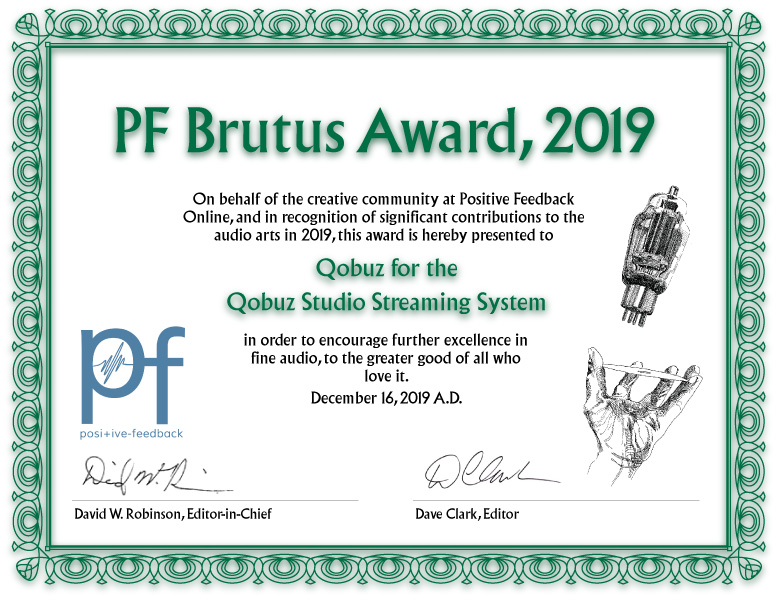
TIDAL Master

TIDAL HiFi has been one of my many streaming options for several years now. Now that we have MQA-equipped hardware on hand pretty liberally now at PF Central (Aurender, exaSound, Mytek, and Astell & Kern), I've been able to shift from my older TIDAL HiFi account to TIDAL Master, and check out various MQA Master albums, since they were of particular interest to me in my listening experience and musical research.
Earlier this year, Peter McGrath of Wilson Audio, and a very long-time master audio engineer himself, did some private listening sessions with me at AXPONA. We did comparisons of some of his vintage recordings from his earlier years of orchestral recording. The original 44.1kHz/16-bit files were contrasted with the new MQA versions of same. I will certainly admit that the MQA versions brought sonic improvements over the originals: more spaciousness, less edginess, less glare, more texture and detail. No, it's not DSD…a format that Peter knows and loves…but MQA did seem better than raw PCM.
And so being able to listen to a much larger selection of TIDAL Master MQA albums has been helpful and pleasant.
Overall, TIDAL Master does an excellent job of delivering its PCM/MQA files, with solid Redbook performance, and MQA showing a sense of sonic gains as listed above in my comments about my session with Peter McGrath. MQA's folding and compression does ease the load on your Internet pipeline, if bandwidth is a concern at your location. (We have gigabit Ethernet via Comcast here, thus bandwidth is not an issue. Your mileage may vary, especially in the rurales.)
I use TIDAL as a standalone app in our car; otherwise, most of the time, I'm either using Roon 1.7, Conductor, Playback Designs, or the Astell & Kern control interface to access TIDAL. All have sounded good…very good, in fact.
In 2020, it's going to be very interesting to see the race between TIDAL and Qobuz for the high-resolution streaming market. Who knows where this competition will end up, especially with so much at stake?
But meanwhile, in 2019, TIDAL Master does take one of my Brutus Awards.
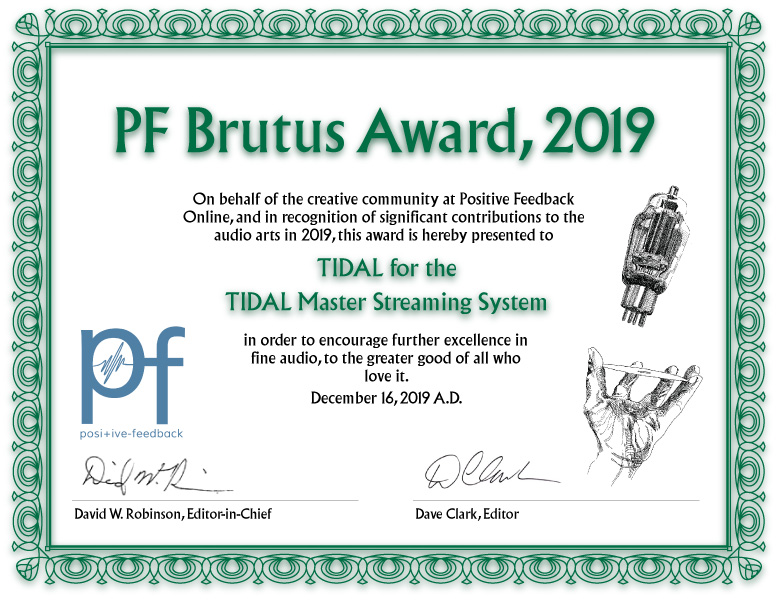
All photographs and image processing by David W. Robinson, unless otherwise noted, or generic images like logos.






